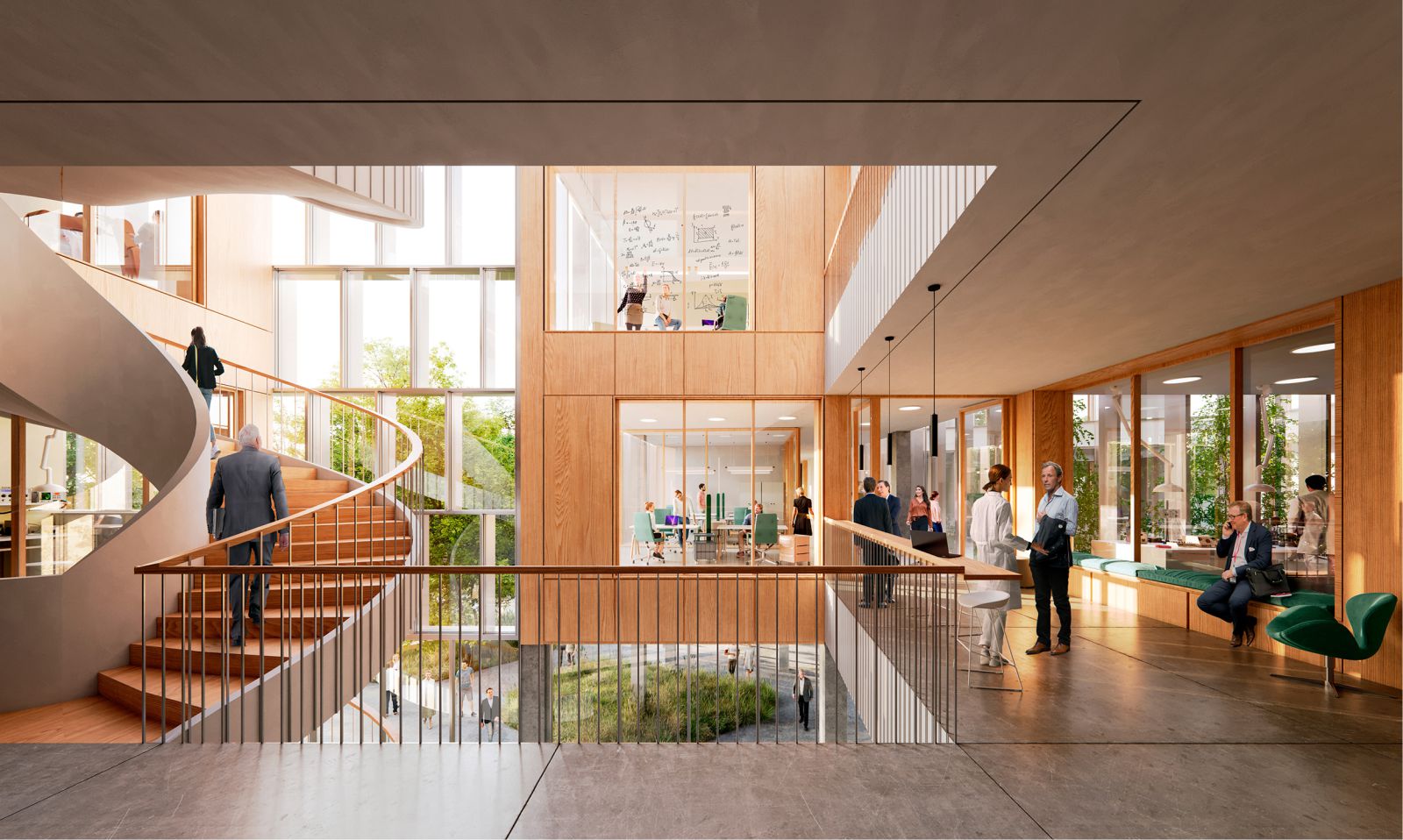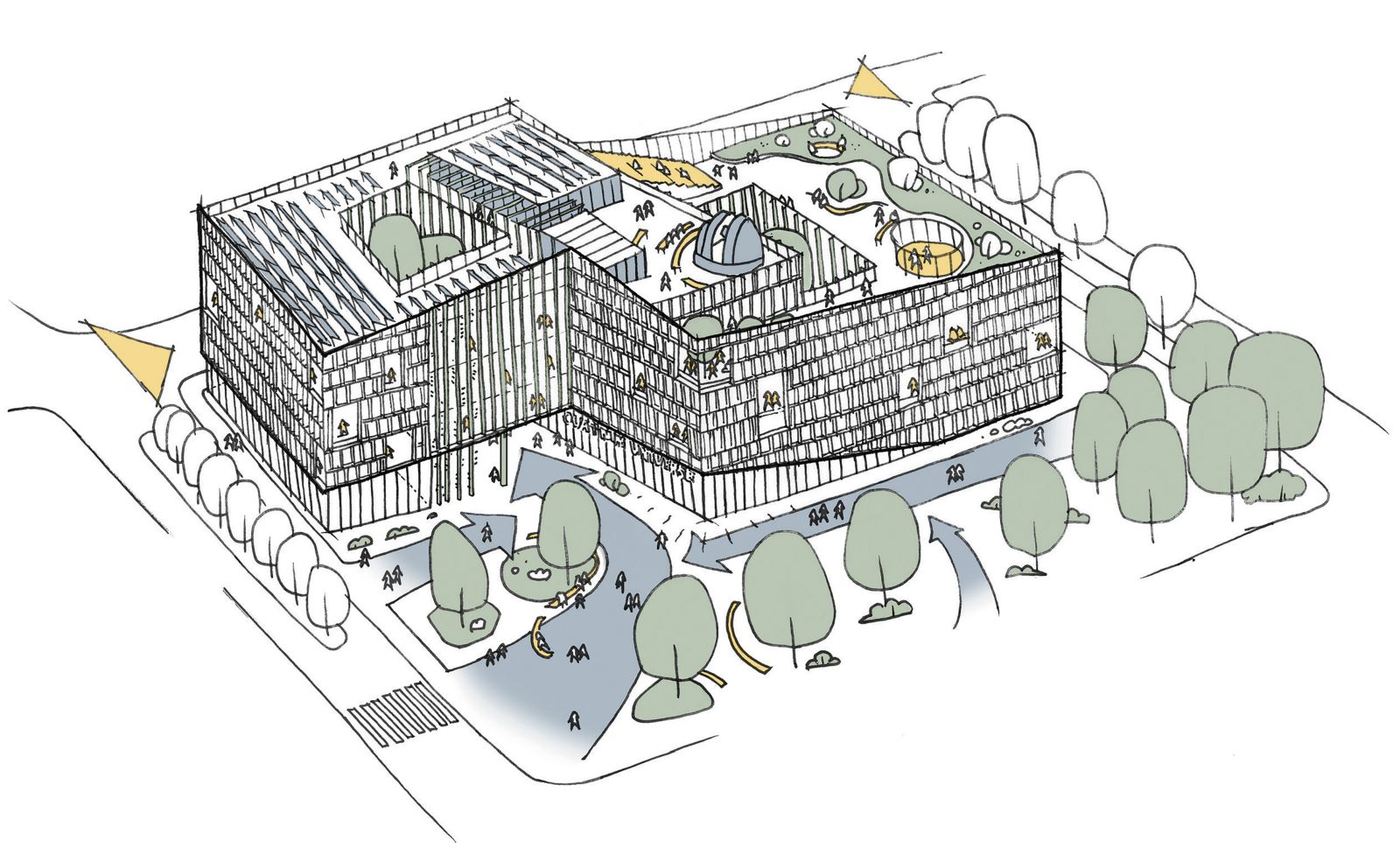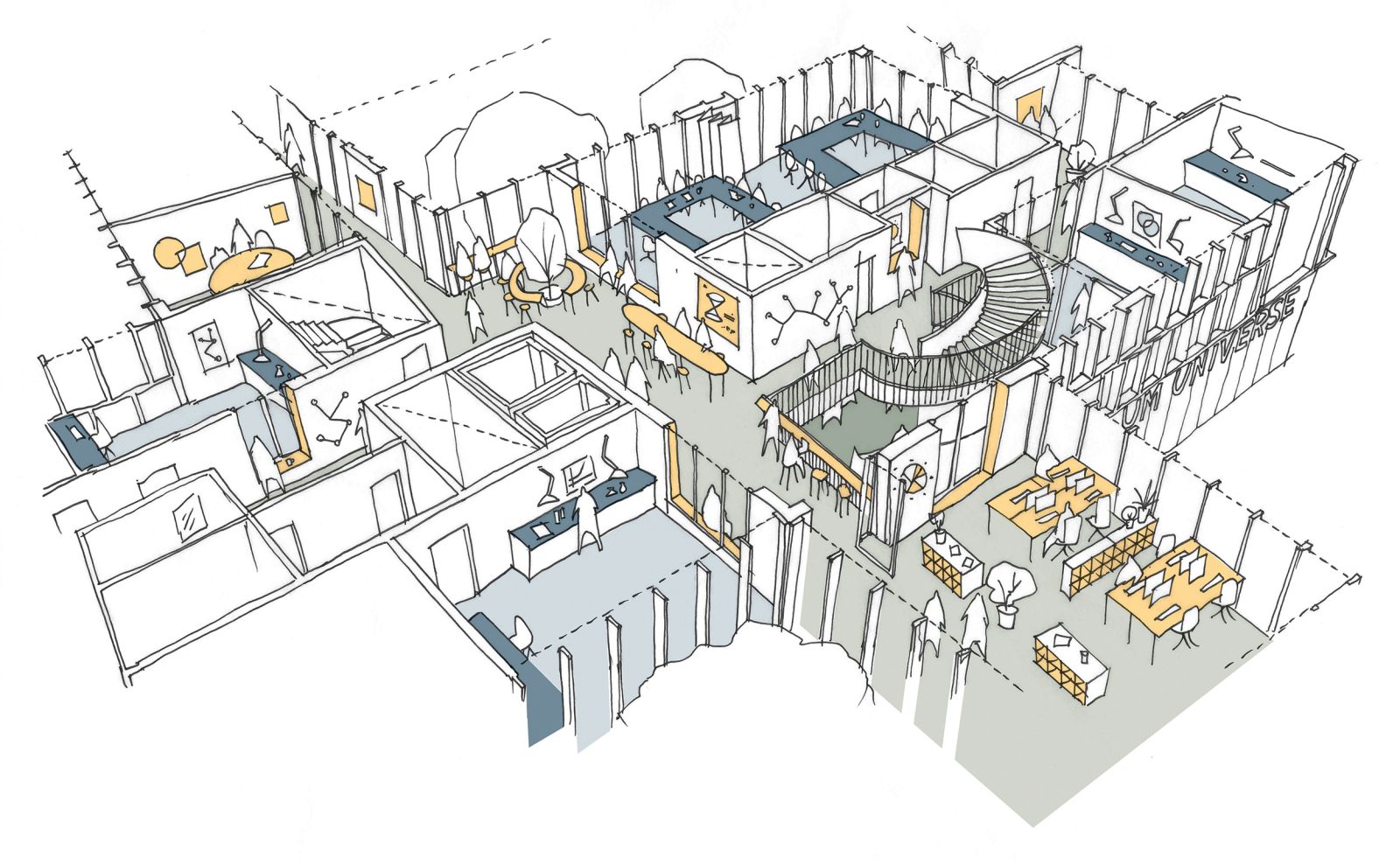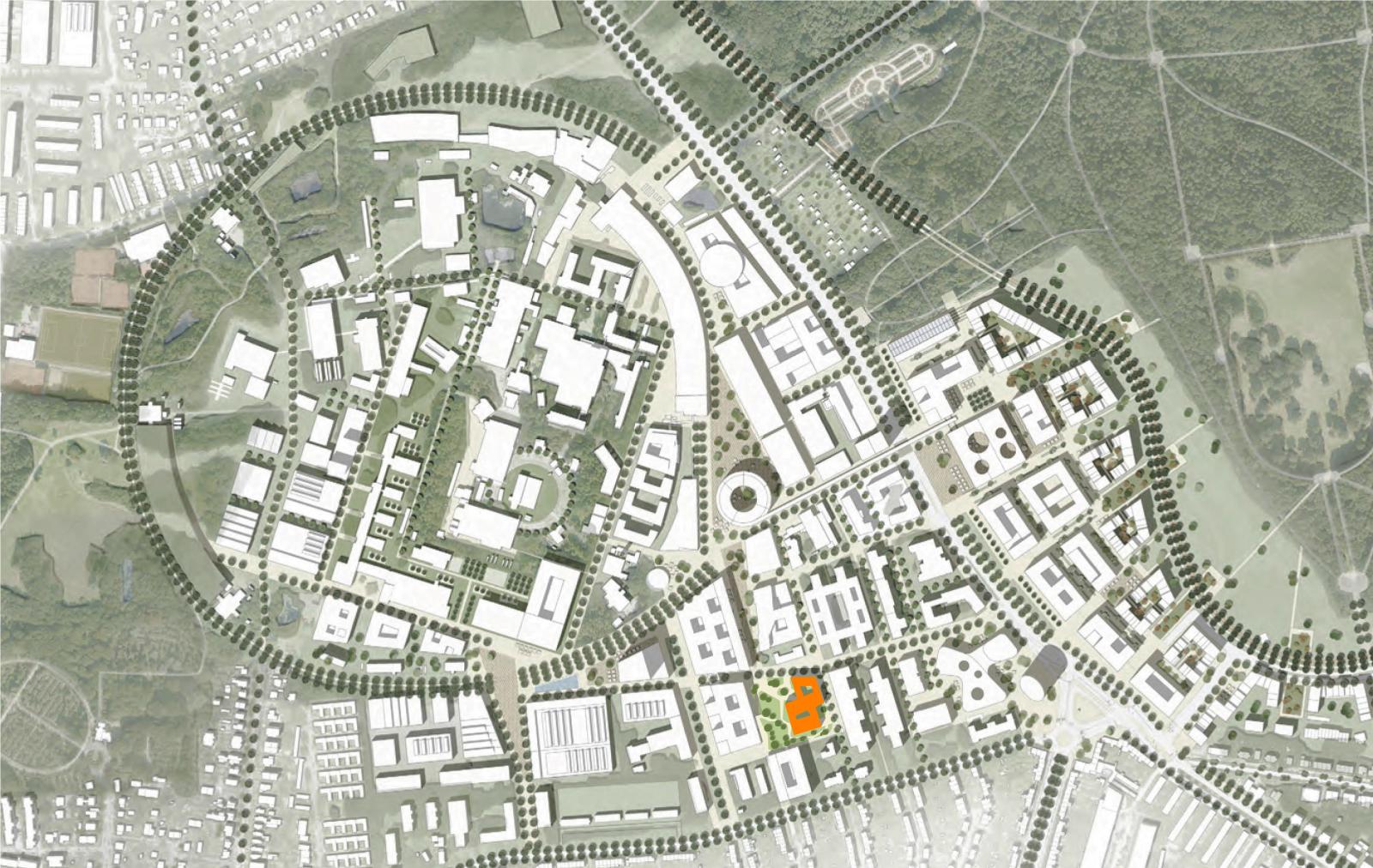The University of Hamburg’s new HAFUN is set to be a landmark for the Science City campus that will house both high-tech underground laboratory facilities and open environments for knowledge sharing and communication. The Science City Bahrenfeld is a “centre of excellence” in Germany and Europe.
HAFUN is key in bringing together two research centres and providing facilities for offices, meeting places and conferences, as well as partially underground laboratories with extremely sensitive equipment for research into, among other things, quantum physics, cosmic radiation and gravitational waves, which require complete shielding from interference and vibrations.

The building consists of two atrium buildings, linked by a corner in each volume. This creates a building geometry like a double loop, which with one unifying facade provides a recognisable and iconic building, which in combination with its landscape design adapts to its surroundings. The building steps down with green roof gardens towards the residential area to the south and opens towards the existing campus to the west.
Interconnecting volumes create angles for outdoor spaces around the building with green terraces and gardens that merge with the volumes’ courtyards, appearing open and welcoming. Here, the building’s entrance is centrally located where the two courtyard buildings are linked.

Rational structure with social nodes
The arrival area consists of a generous foyer extended by an elegant spiral staircase to the roof terraces, allowing visitors to easily access an observatory and outdoor teaching facilities. The link between the two volumes forms the heart of the building, where a centrally located atrium creates a social hub. Conference facilities are located at an attractive street-level corner, where the interior space can be extended with outdoor courtyard spaces.
Daylight, light interiors and wooden panels create a pleasant atmosphere and have an acoustic absorbing effect in the atrium, offices and spacious corridors furnished with lounge areas. The interior of the building is based on a rational and flexible structure, with an emphasis on openness and meeting places that encourage knowledge sharing and collaboration.

HAFUN: Hamburg Fundamental Interactions Laboratory
In Science City Hamburg Bahrenfeld, the new research building “Hamburg Fundamental Interactions Laboratory (HAFUN)” will further expand the excellent research conditions for the physicists of the University of Hamburg and their partners and thus sustainably promote the clusters of excellence.
Nine working groups from the Department of Physics at the University of Hamburg will conduct research on approx. 6,200 square metres of net floor space. In the Department of Physics, the area forms one of the three research focal points with a total of 18 professorships. The building is being realised by Sprinkenhof GmbH on behalf of the Authority for Science, Research, Equality and Districts (BWFGB) in the tenant-landlord model.

Cluster of Excellence Quantum Universe
The aim of the Cluster of Excellence Quantum Universe is to explore the connections between mass and gravity at the interface of particle physics and cosmology in order to resolve the current contradiction between the Standard Model of particle physics and the Standard Model of cosmology through a common physical explanation.
In addition to theoretical work, novel experiments are indispensable to answer this question. The HAFUN building itself will serve as a measuring instrument for gravitational wave research and cosmic radiation. Source by C.F. Møller Architects.


- Location: Hamburg, Germany
- Architect: C.F. Møller Architects
- Engineering: BZS-Bauphysik GmbH Christian Bonik GmbH Fassadenberatung
- Collaborators: BAL, Bauplanungs und Steuerungs GmbH
- Landscape: C.F. Møller Architects
- Client: Sprinkenhof GmbH
- Status: 1st prize in architectural competition. 2023
- Size: 12,000 m2
- Year: 2023
- Images: Courtesy of C.F. Møller Architects

